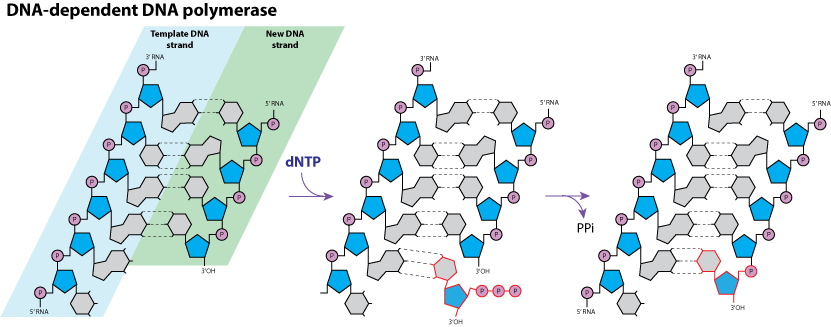DNA-dependent DNA polymerase
DNA-dependent DNA polymerase (DdDp) plays a role in DNA replication. It catalyzes the synthesis of the DNA strand complementary to a given DNA template. Viruses encode polymerases A-family (virus, bacteria), B-Family (virus, eukaryotes and archaea) and C-family (virus and bacteria).

Naming: By convention viral polymerases are called RNA/DNA-dependent whereas cellular polymerases are called RNA/DNA-directed.

Enzymatic reaction:
- DNA nucleotidyltransferase (DNA-dependent) EC 2.7.7.7 RHEA:22508
Mechanism
Viral DdDp are characterized by a conserved motif in which two conserved aspartic acid residues are bound to two magnesium ions. The reaction begins with the deprotonation of primer's 3' OH, in a manner that doesn't require a base

. Subsequently, the 3'-oxygen acts as a nucleophile to attack the phosphate bond and eventually releases a pyrophosphate.



 . Subsequently, the 3'-oxygen acts as a nucleophile to attack the phosphate bond and eventually releases a pyrophosphate.
. Subsequently, the 3'-oxygen acts as a nucleophile to attack the phosphate bond and eventually releases a pyrophosphate.

